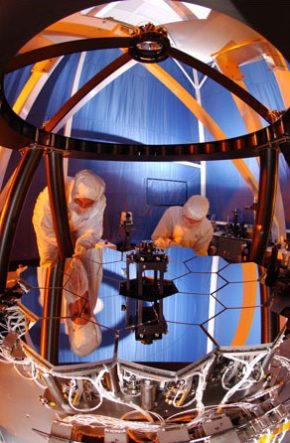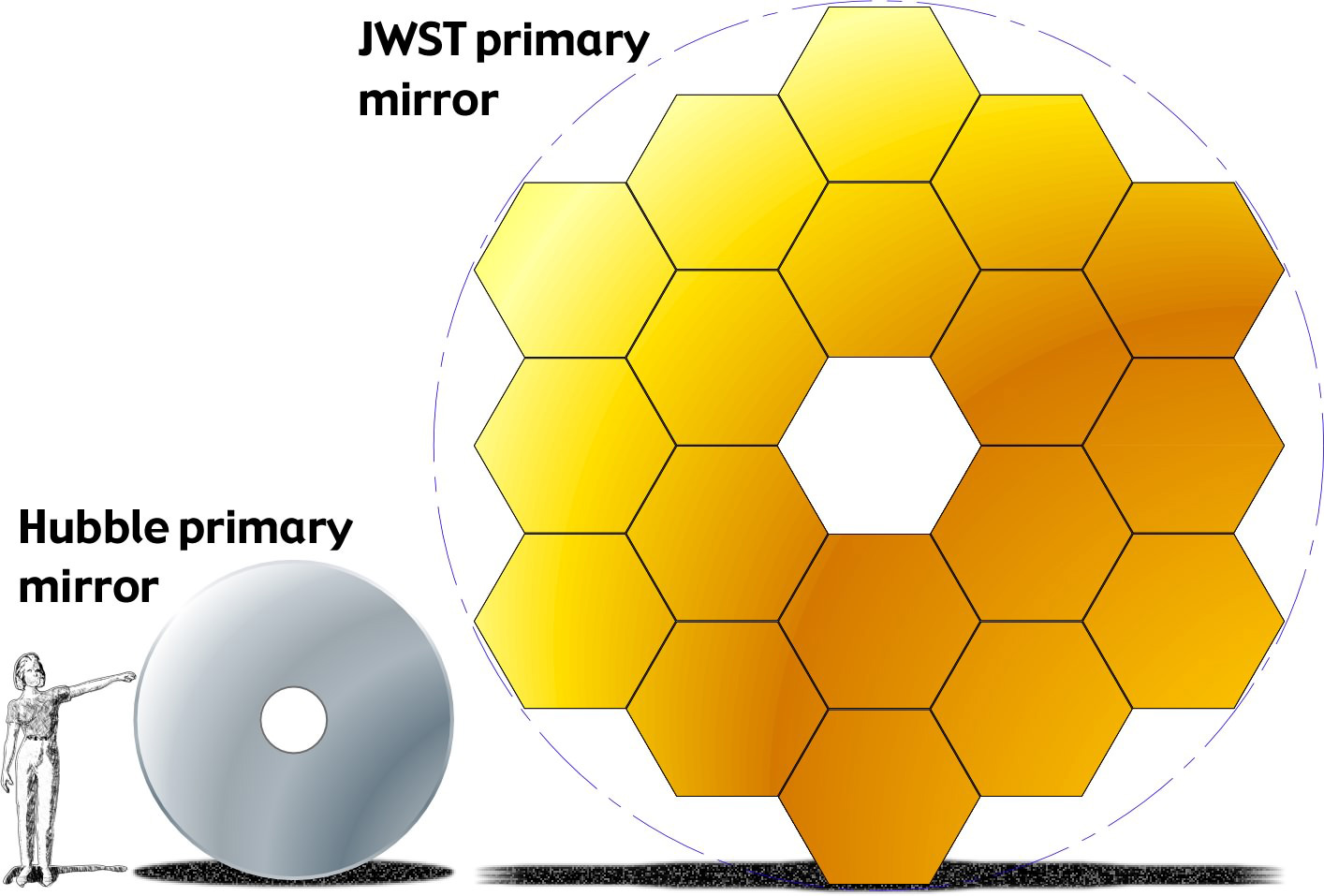
The James Webb Space Telescope (JWST) is set to launch later this month. It’s the most powerful space telescope ever built, and it will travel approximately one million miles to shed light on how the universe formed and how our solar system has evolved.
At a glance

- Launch date: Dec. 22, 2021
- Launch site: Europe’s Spaceport, French Guiana
- Launch vehicle: Ariane 5 rocket
- Destination: The second Lagrange point (L2)
About the mission
The highly anticipated launch of the JWST is fast approaching. This revolutionary mission will help scientists learn about how our universe and solar system formed.
The JWST isn’t your average telescope. It’s a feat of engineering, a true modern marvel with unparalleled tech. It’s got the largest primary mirror of any space telescope (much larger than Hubble’s), and is equipped with the latest and greatest instruments to help scientists unlock the secrets of the cosmos.
Unlike Hubble, the JWST will not orbit the Earth. Instead, it will orbit the Sun at the second Lagrange point, also known as L2. In just 29 days, the JWST will reach its destination and begin preparing for robust scientific discoveries.
Shortly after launch, the JWST will deploy its solar array and a high gain antenna to establish communications. According to NASA, the JWST will then undergo a mid-course correction on its way to L2. Within the first week following launch, the sunshield will deploy.
Then, within one month after liftoff, the telescope will deploy, its scientific instruments will activate, and the JWST will enter orbit around L2. Within the next four months, the JWST will perform equipment and systems checks.

Assuming all goes according to plan, the JWST should be fully operational and in use just six months after launch. This next generation space telescope will serve astronomers and scientists from across the globe as the leading orbital observatory for the foreseeable future.
However, the mission won’t be without its own set of challenges. The fate of the JWST rests on its ability to successfully unfold, which is easier said than done. It must precisely execute 50 major deployments, and there is no room for error.
Take a sneak peek at this groundbreaking mission by checking out the clip below.
Fun facts
- According to NASA, the telescope’s sunshield has five layers and is the size of a tennis court!
- To fit into the rocket for launch the JWST must be folded up. It will begin to slowly and carefully unfold once it is in space.
- The sunshield protects the JWST with an equivalency of SPF one million!
- On one side of the sunshield, the temperature will be roughly 185 degrees Fahrenheit (almost enough to boil water). On the other side, the temperature will be -388 degrees Fahrenheit (enough to freeze nitrogen)!
Find more information on the James Webb Space Telescope here.








